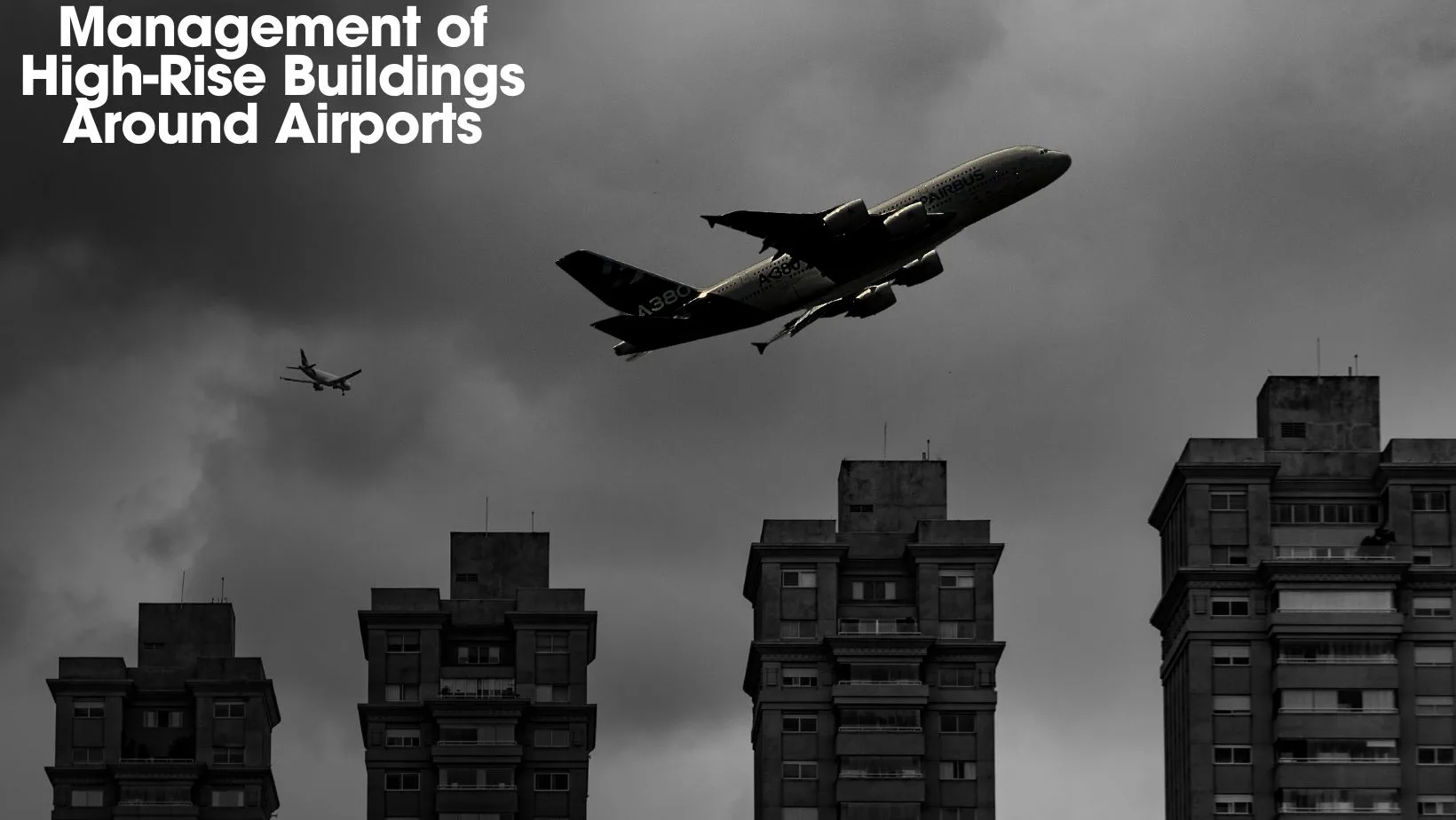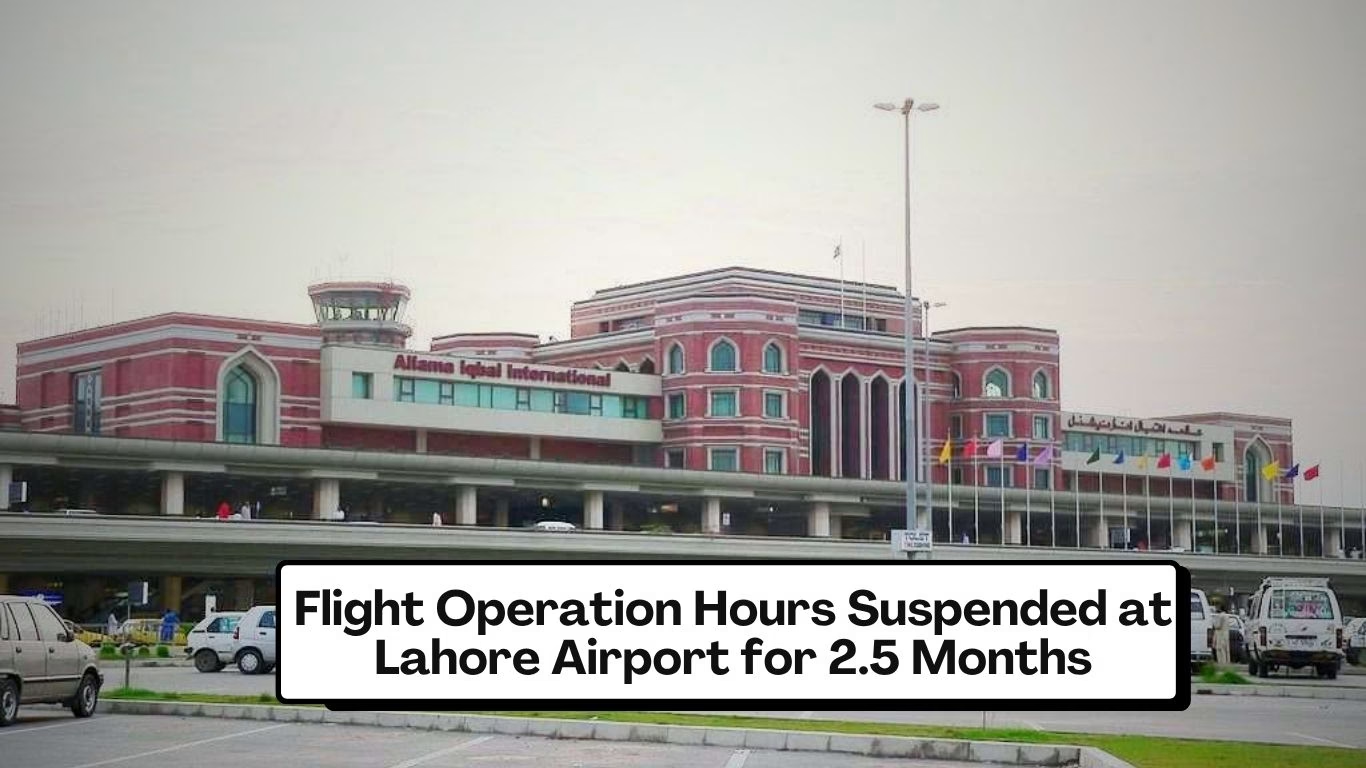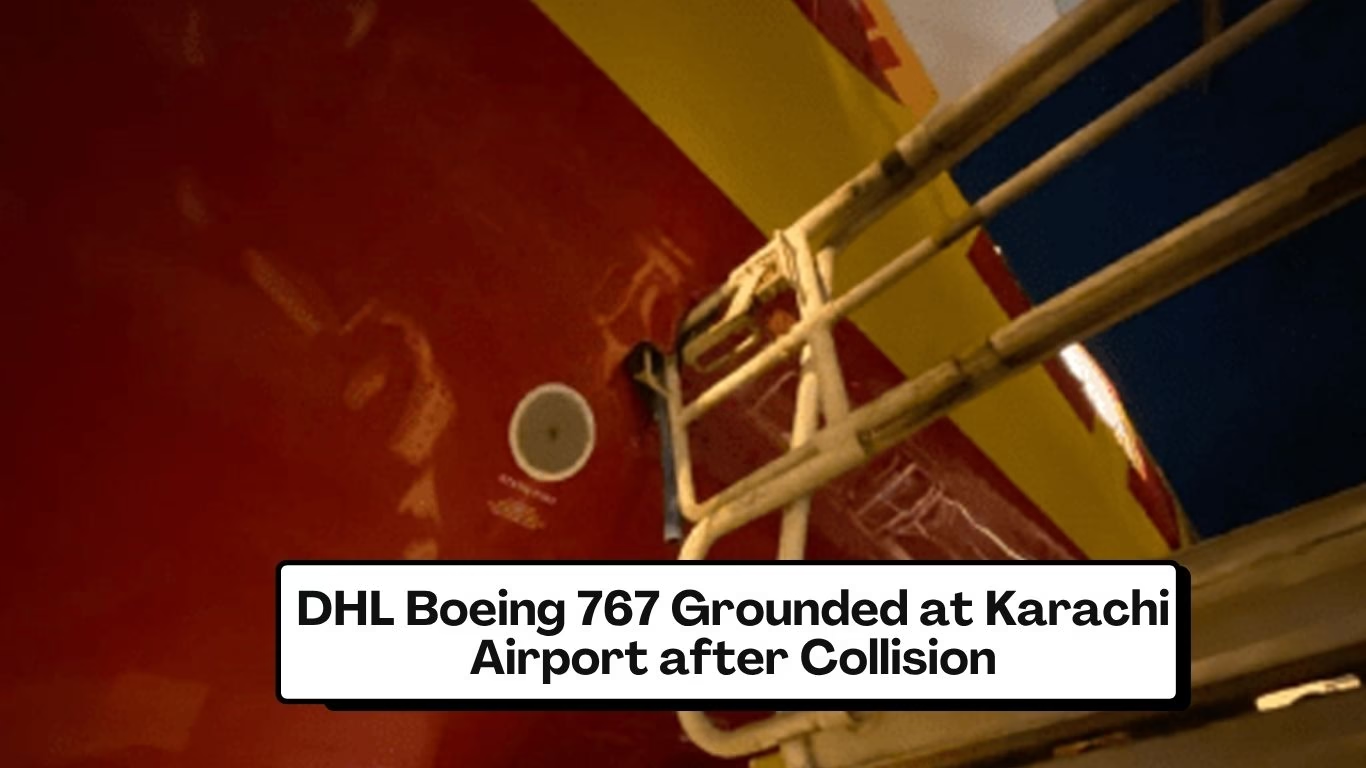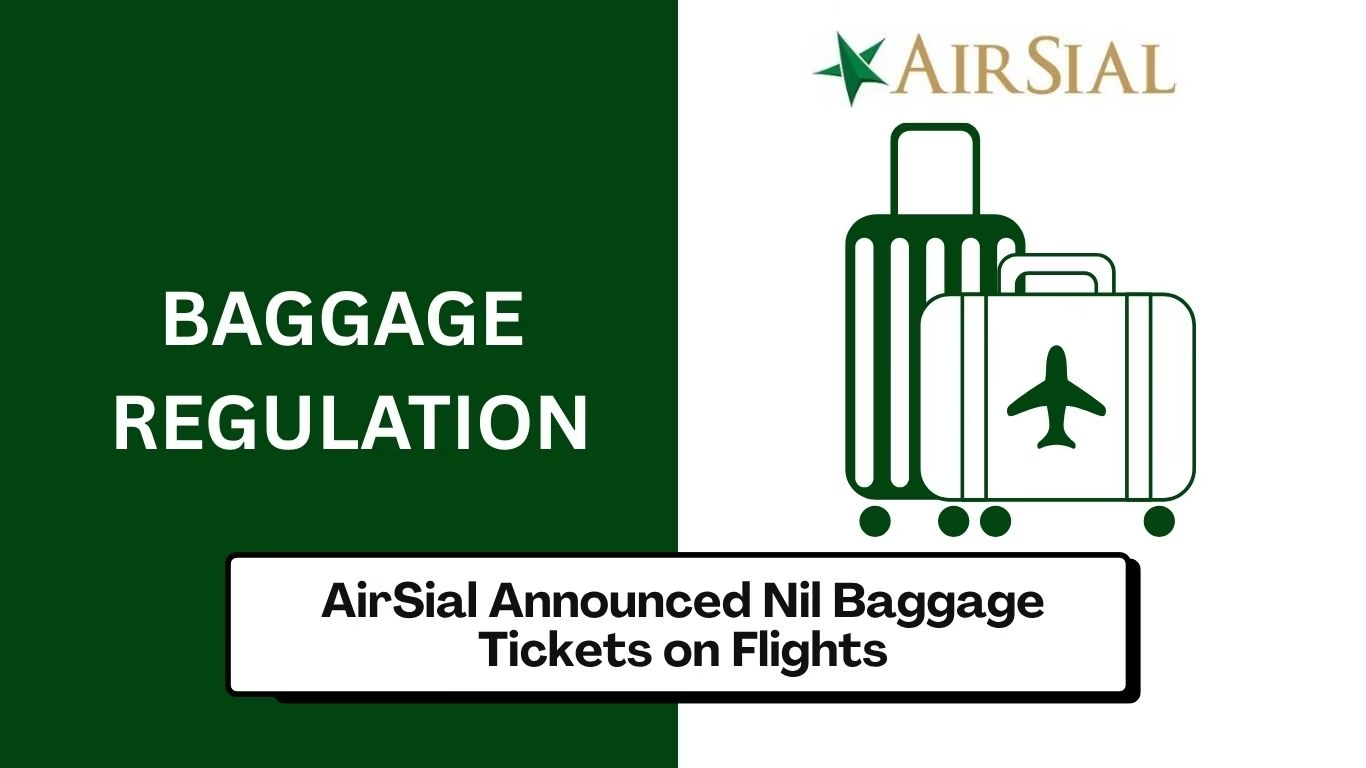Your cart is currently empty!

Management of High-Rise Buildings Around Airports
Compilation by
Zia Ullah Sheikh, Rtd. Sr.ATCO, FCILT (UK)

Preface
The presence of any obstruction in the takeoff and landing path of an aircraft limits its operational capability affecting the safe operation of the aircraft. The degree of freedom from high-rise buildings around airports is important to have a safe and efficient operation at the airports.
The objective of this compilation is to highlight the problems in this area and to create awareness on the subject for the public in general. Particularly for those organizations and professionals who are engaged in high-rise buildings, towers, masts, rigs, overhead bridges, water tanks, high-tension wires, and road networks so that they can appreciate the associated problems/hazards to aviation safety and can plan accordingly at the very initial level of their working.
This compilation is based upon the ICAO Annex 14-(Aerodromes ), Pakistan Civil Aviation Rules – 1994 (CAR’s), Pakistan’s National Policy 2019 (NAP2019), National Air Field Clearance Policy, PCAA Air Navigation Order on Prevention of Obstacles around aerodromes (ANO-004-DRAS-2.0.of 2021) PCAA Manual of Aerodrome Standards (MNL-003-DRAS-5.0 of 2020) and the Government of Pakistan (Aviation Division Notification on establishment of Structure free zone around Islamabad new airport (No.3-31/83-P&D dated 21st April 2015).
It is expected that this compilation will be a value-added for all BS Aviation Management students besides the various stakeholders engaged in development activities as well as town planners, civil engineers, electrical engineers, and others engaged in mega projects at or in the vicinity of airports to understand the presence of high-rise buildings, structures, obstructions at and around airports, its effects on flight safety and various control measures, legal tools available at national and international level to have obstruction free airspace at and around airport which is necessary for the safe flight operation.
Historical Background
An aerodrome is defined as any area of land or water designed equipped, set apart, or commonly used or intended to be used, either wholly or in part, for affording facilities for the landing and departure, of aircraft, and includes all buildings, sheds, vessels, piers, and other structures thereon or appertaining thereto whereas Airport is an aerodrome at which in the opinion of the aviation regulatory body safety, security and related facilities for the passengers, cargo & mail have been sufficiently developed as per importance to civil aviation & regulatory of air transport.
The evolution of Airports may be described as follows:
- Landing Ground
- Landing Area
- Landing strip
- Runway ( Instrument, Non Instrument, Precision CAT 1,2,& 3A, B or C)
- Aerodrome (Civil, Military, Joint, Day, Night, Private / Charter)
- Airport (International, Domestic)
Legislative terms may be described as follows:
- Law
- Rule
- Act
- Regulation
- Ordinance
- SRO
An aerodrome obstacle is any high-rise building, any temporary, permanent, or mobile object / or parts thereof, that is located at or around the aerodrome in the area intended for the surface movement of aircraft or that extends above a defined surface in the vicinity of aerodrome above the ground intended to protect the aircraft in flight.
Obstacle limitation surfaces can extend to distances greater than 15 kilometers from the runway thresholds.
Obstacle Limitation Surface: is a surface that establishes the limit to which objects may project into the airspace associated with an aerodrome consisting of the following;
- Area at both ends of the runway
- Area at both sides of the runway axis
- Area close to the taxiway and apron
- Area which falls in the vicinity of an aerodrome
ICAO Procedures for High-Rise Buildings Around Airports
ICAO in under the provisions of Article 37 of the Chicago Convention 1944, Standards and Recommended Practices for Aerodromes on the subject were first adopted in September 1947 published as guidelines in 1949 by the Council, and finally published as Annex 14 in its first edition on 29 May 1951. Accordingly, the following areas are to be kept free from any type of obstacles to have a safe and orderly flow of air traffic at any aerodrome:
- Takeoff surface
- Approach for a landing surface
- Transitional surface and
- Outer surface
ICAO further elaborated the subject of Control of Obstacles in the Airport Service Manual Part-6 (2nd edition published in 1983 and still valid) to help the contracting states to establish their own procedures for implementation.
Pakistan Aviation Regulations
After the independence of Pakistan, all existing airports in Pakistan became under the operational control of the Pakistan Air Force. As the ICAO was established and Pakistan became a member of ICAO, a separate department was established in the Ministry of Defense to look after the civil aspect of Air transport. In light of the ICAO recommendation, PAF made a policy on the subject of Pakistan airfields and illustrated the relevant part in the CEA (Air) Air Head Quarter Drawing No. J/602, Sheet No.3/3 dated 26th January 1960.
Role of the Civil Aviation Department
Civil Aviation Department prepared the Standard Plan for National Air Field Clearance (Land requirement) and issued Drawing No.5 of 1966 published on 29th August 1966 to illustrate the national civil airfield requirements based upon ICAO standards, which was adopted from the PAF headquarters drawing.
The government of Pakistan being the contracting state of ICAO, laid down the rules for the safeguard of aerodromes and published them as Civil Aviation Rules through Gazette notification on 20th Jan 1979.
ICAO Airport Service Manual Part-6 (2nd edition published in 1983) on the Control of Obstacles for safe movement of aircrafts, identifies the following surfaces to be established at an aerodrome for which the contracting states to establish their own procedures for implementation:
- Takeoff & approach path surfaces:
- Ground movement surfaces
- Inner conical surface
- Inner horizontal surface
- Outer conical surfaces
- Outer horizontal surfaces
Civil Aviation rules were first made by the ordinance of 1960 and further revised in 1966 of 1978 by the Civil Aviation Department working under the Aviation Division in the Ministry of Defense. CAD was converted into CAA through the CAA Ordinance of 1982.
National Airfield Clearance Policy
To meet the ICAO’s Annex-14 requirement and guidelines given in Airport Service Manual Part-6 and as per CAA rules the Pakistan National Airfield Clearance Policy (NACP) was published in the first edition of Manual of Air Traffic Service (MATS) on 14th Aug 1987 as Appendix A1-10.
Consequent upon the change of CAD to CAA certain legislative changes occurred and CAA accordingly to meet the ICAO / Legislative requirement issued a CAAO to cater to the implementation of National Airfield Clearance Policy at CAA airports (OPI ATS CAAO No. 6-3 dated 25th Dec 1988) which supersede all the previous instructions on the subject and made airport managers /zonal managers responsible for the implementation and ensure that provision of NACP not violated. ATS directorate was made OPI on the subject to issue NOC in all cases. In case of any deviation/constraints, DGCAA is to issue a waiver as applicable in the light of CAA rules.
In light of various legislation requirements/needs the Civil Aviation Rules were revised through SRO and published as Civil Aviation Rules -1994 (CAR’s 1994) section 3 of CAR’s 1994 deals with “Safeguarding at aerodromes” and rule No.68 of CAR’s1994 deals with the Limitation/control of obstruction at and in the vicinity of aerodromes/airports in the light of ICAO standards and our National requirements for the safe and expeditious operation of aircraft.
ANO for Obstacles Clearance
PCAA Directorate of Air Navigation & Aerodrome Regulations (DAAR) issued Air Navigation Order (ANO-004-DRAS-1.0 dated 30th Nov 2009) regarding clearance area and obstacle limiting surfaces at aerodromes in pursuance of CAR’s 1994 redefining the various terms/definitions contain in CivilAviation Ordnance 1960, Civil Aviation Authority Ordnance 1982 and CAA rule 68(2) of CAR’s 94which made the major shift in implementation of NACP based upon Airport Master plan to the existing aerodrome Reference code, which is dependent upon classification/category of runway and the type of aircraft operation.
Keeping in view the construction of Islamabad’s new airport and the mushroom growth of housing societies around the proposed site of the airport Government of Pakistan Aviation Division Islamabad issued a special notification No.3-31/83-P & D dated 21st April 2015 declaring an area of 7KM long and 2000 feet wide at both ends of the Islamabad new airport both runways and 200 feet beyond the airport parameter fence as structure free zone.
Federal Government (Aviation Division) further made the amendment in Rule No.68 of (CARs 1994) through extra ordinary Gazette notification S.R.O 9(KE)/2021 effective from 12th February 2021 which made the:-
- Concerned Building Control Authority or FAB, declared responsible for compliance with OLS requirements while approving building plans or structures in accordance with the Federal Government Notification issued vide SRO 9(KE)/2021.
Role of Building Control / Authorities and Frequency Allocation Board (FAB)
Building Control Authorities / FAB /PTA as the case may be, shall provide to the HQCAA (DAAR), Pakistan Air Force, and concerned Aerodrome /Airport Manager, the site coordinates (WGS-84 Geographical coordinates in degrees, minutes, seconds, and 1/100 of seconds) of all corners along with elevations in AMSL of the proposed site, duly authenticated from Survey of Pakistan and the height allowed in respect of:-
- All buildings and installations within 15Km of the airport.
- All buildings and installments of height 100m AGL or higher are situated beyond 15 Km of the airport.
- Seek the specific decision of the Director General CAA for the buildings/installations of 150m height or more prior to grant of permission for construction/installations along with the required height of the building /structure/antenna etc.
Implementation of Obstacle Limitation Surfaces ANO-004-DRAS-4.0
- The Obstacle Limitation Surfaces (OLSs) criterion, conforming to International Standards contained in ICAO Annex 14 (Vol-I), is specified in Civil Aviation Aerodrome (Design &Operations) Regulations 2018. The respective Building Control Authority or FAB (PTA), as the case may be, shall take necessary measures to ensure compliance and shall establish a mechanism for evaluation and compliance with Obstacle Limitation Surfaces (OLSs) Criterion for safeguarding aerodromes to the satisfaction of Civil Aviation Authority.
- The Obstacle Limitation Surfaces (OLSs) shall be maintained around aerodromes throughout the territorial limits of Pakistan in compliance with Rule 68 of Civil Aviation Rules 1994, as amended from time to time and in accordance with the Obstacle Limitation Surfaces (OLSs) criterion established/prescribed by Pakistan Civil Aviation Authority. The latest amendment in Rule 68 of CARs 1994 is promulgated through SRO 9(KE)/2021 dated 25th Feb 2021.
CAA Rule 68. (Section 3- Safe Guarding at Aerodromes – CARs of 1994) amended by Federal Government (Aviation Division) through extraordinary Gazette notification S.R.O 9(KE)/2021 effective from 12th February 2021 (by substituting/increasing clauses from 2 to 8)as follows
Limitation of Obstructions
- No person shall erect any temporary or permanent structure, nor position a vehicle or other mobile object on or in the vicinity of an aerodrome to which these rules are applicable, that will be within the runway strip and taxiway strip, or will protrude through an obstacle limitation surface, at that aerodrome.
- For the purpose of this rule the area of 15KM around runway and associated stopway or clearway at an aerodrome shall be safeguarded from obstacles and the building construction or installation above ground shall be regulated by the respective building control authority and Frequency Allocation Board as the case may be, strictly in accordance with the OLS described in Civil Aviation Aerodrome (Design&Operation) Regulations.
- Prior to grant of permission for construction of building or installation of antenna, respective building control authority and PTA and FAB,as the case may be, shall provide to PCAA and PAF the site coordinates (WGS-84 coordinates in degree, minutes and seconds up to 2 decimal places) and elevation duly authenticated by survey of Pakistan and the height allowed (AGL/AMSL) in respect of:
- All buildings and installations within the area defined or prescribed in sub-rule (2)
- All buildings and installations of height 100M AGL or higher and situated or located beyond the area defined or described in sub-rule (2) to ensure continued safety of aircraft operation and for publication in AIP Pakistan.
- Notwithstanding sub-rule (3) construction of buildings and installations in areas beyond the lateral limits of the OLS specified in sub-rule (2) for height of 150M or higher, may require aeronautical study in coordination with stakeholders and therefore respective building control authorities and FAB as the case may be, prior to grant of permeation shall request specific decision of the DGCAA.
- Respective building control authorities and FAB as the case may be, shall ensure appropriate day and night marking and lighting on the building and installation in accordance with the requirement contained in Civil Aviation Aerodrome (Design & Operation) Regulations.
For the purpose of this rule:
- Runway strip and taxiway strip at an aerodrome shall be the areas as defined and characterized for each category of aerodrome in the Civil Aviation Aerodrome (Design & Operation) Regulations and are conforming to the relevant SARPS contained in ICAO Annex-14.
- OLS at an aerodrome shall be the surface described in the Civil Aviation Aerodrome (Design&Operation) Regulations and conforming to the relevant SARPS contained in ICAO Annex-14(Vol-1) and ICAO DOC 9137 Airport Service Manual Part-6
6. Notwithstanding the provision of this rule, the DGCAA may order and convene an aeronautical study to determine and recommend establishing other criteria or exemptions and deviations from criteria specified in the Civil Aviation Aerodrome (Design&Operation) Regulations. The DGCAA if satisfied with the recommendations of aeronautical study, may specify in ANO or by other means other dimensions of clearance areas and OLS or grant and issue waiver for a particular aerodrome and object as the case may be.
7. In the event that a person or entity erects a structure or positions a vehicle or other mobile object in contravention of this rule, the DGCAA shall take such action as it considers fit to cause the infringing object to be removed, and shall not be liable for damage so caused. Any costs incurred by the DGCAA in taking such action shall be borne by the person causing the infringement.
Role of CAA Directorate of Airspace and Aerodrome Regulations (DAAR)
DAAR is responsible for establishing standards and prescribing OLSs criterion for safeguarding aerodromes and may arrange awareness/trainings for Building control authority, Frequency Allocation Board (PTA) Aerodrome Operators, and airport management for their capacity building to monitor implementation.
DAAR to facilitate the process /cases under Rule 68 of CAR’s1994 for the approval of DGCAA as applicable and, conduct Safety Oversight Audits on regular basis,
APM/COOshallinitiatelegalactions, if required, against the person/association/entity, owner, builder, etc. and against the Building Control Authority / FAB (PTA), as the case may be, for the removal of any obstruction/obstacle causing infringement of Obstacle Limitation Surfaces (OLSs) in violation of Rule 68 of Civil Aviation Rules 1994.
Directorate of Airspace and Aerodrome Regulations (DAAR) of CAA accordingly revised the ANO- 004-DRAS-1.0 of 2009 as ANO-004-DRAS-4.0 of 15th September 2021, redefining the role of CAA / DAAR & implementation process as follow:
- The Airport Managers (APMs) / Chief Operating Officers (COOs) / Aerodrome Operators / Aerodrome Service Providers / Airstrip Owners shall ensure continuous monitoring & surveillance over an area of 15KM Radius around their aerodromes/airports/airstrips and ensure implementation of Rule 68 of Civil Aviation Rules 1994 (CARs-1994) and to take appropriate enforcement actions, where required.
- For this purpose, the Environmental Control Committee (ECC) comprising representatives from Local Government, Law Enforcing Agencies (Police/levies), and concerned Building Control Authorities shall be established and chaired/headed by the Airport Manager (APM) / Chief Operating Officer (COO) at all aerodromes/airports open to public use.
ANO-004-DRAS-4.0 of 15th September 2021
A clearance area at an aerodrome:
- In respect of runway, is an area 457 meters wide located symmetrically about the runway and extending the full length of the runway and for a distance of 274 meters beyond each end, plus an area at each end with a length of 914 meters and widening over its length from 457 meters to a width of 646 meters;
- In respect of a taxiway, is an area 137 meters wide, centered on the taxiway and extending the full length of the taxiway;
- In respect an apron, is an area enclosing an apron with a perimeter that is 38 meters outside its edges;
An obstacle limitation surface at an aerodrome is:
- A funnel area is a sloping surface at each end of a runway, which originates at the end of the runway clearance area at the elevation of the runway threshold, located symmetrically about the produced center line of the runway and rising 1 meter vertically in every 50 meters horizontally over its length of 2773 meters, to a height of 55 meters, and with a width of 457 meters adjacent to the clearance area, widening to 1219 meters at its far end.
- An area of restricted height is a horizontal surface 55 meters above the elevation of the runway at the end of each funnel area, located symmetrically above the produced center line of the runway, having a width of 1229 meters and a length of 4572 meters.
- An inner horizontal surface is a surface 45.7 meters above the aerodrome elevation within a radius of 3962 meters from the aerodrome reference point.
- An inner conical surface is a surface extending outwards and upwards from the periphery of the inner horizontal surface, and from the edges of the funnel area and the area of restricted height, with a gradient rising 1 meter vertically in 20 meters horizontally measured radially from the aerodrome reference point, to a height of 151 meters above the aerodrome elevation; and (v) an outer horizontal surface being a surface 151meters above the aerodrome elevation within a radius of 15,240 meters from the aerodrome reference point.
- A transition surface is a surface extending outwards and upwards from the runway clearance area and the funnel area with a gradient rising 1 meter vertically in 7 meters horizontally, measured at right angles to the runway axis, until it intersects the inner horizontal surface, and extending outwards and upwards from the edges of the area of restricted height with a gradient rising 1 meter vertically in 7 meters horizontally until it intersects the inner conical surface and the outer horizontal surface, the gradient being measured from the sides of the area at right angles to the runway axis, and parallel to the axis at the end.
Consolidated Graphical Display of Surfaces Around Airport




(asperANO-004-DRAS-4.0of15thSeptember2021)
Funnel Area
A funnel area is a sloping surface at each end of a runway, which originates at the end of the runway clearance area at the elevation of the runway threshold, located symmetrically about the produced center line of the runway and rising 1 meter vertically in each 50 meters horizontally over its length of 2773 meters, to a height of 55 meters, and with a width of 457 meters adjacent to the clearance area, widening to 1219 meters at its far end.


(CAR No.68 ( i )
(asperANO-004-DRAS-4.0 of 15th September 2021)
Area of Restricted Height
An area of restricted height being a horizontal surface 55 meters above the elevation of the runway at the end of each funnel area, located symmetrically above the produced center line of the runway, having a width of 1229 meters and a length of 4572 meters; and


CAR No.68 (ii) Limitation of obstructions.
Transition and Inner Horizontal Surfaces
Transition & inner horizontal surface being a surface 45.7 meters above the aerodrome elevation within a radius of 3962 meters from the aerodrome reference point


CAR No.68 (iii) Limitation of obstructions.
An inner conical surface is a surface extending outwards and upwards from the periphery of the inner horizontal surface, and from the edges of the funnel area and the area of restricted height, with a gradient rising 1 meter vertically in 20 meters horizontally measured radially from the aerodrome reference point, to a height of 151 meters above the aerodrome elevation, and an outer horizontal surface being a surface 151meters above the aerodrome elevation within a radius of 15,240 meters from the aerodrome reference point; and

CAR No.68 (iv & v) Limitation of obstructions.





















Conclusion
The subject matter of obstructions around the airfields and safety of flight operation can be summarized as follow:
- Since the start of aviation in the sub-continent subject matter remained with the military / Royal Air Force. After the inception of Pakistan in 1947 subject matter became under the Pakistan Air Force / Civil Aviation Department (both working under the Ministry of Defense).Due increased use of aviation in civil transport and the creation of ICAO guidelines on the subject matter Standard Plan of National Airfield Clearance was formulated in 1958 and adopted by the Civil Aviation Department of Pakistan in 1966.
- Standard Plan on National Airfield Clearance published as Aircraft Manual of 1966 converted into CAD rules in 1979. BaseduponCADrules1979, National Airfield Clearance as a Policy.
- Consequent upon conversion of CAD to CAA in 1982 the National Airfield Clearance Policy published in the Manual of Air Traffic Services in 1988, which made the Pakistan Airfield clearance standards more strict/stringent then the ICAO recommended standards on the subject. The CAD rules of 1979 were amended as CARs1994 and Airport managers were made responsible for the monitoring and implementation of NAFC whereas ATS directorate of HQCAA was responsible for the issue of NOC for any such high-rise building etc in the area given in Standard Airfield clearance plan.
- Rule No.68 of CAR 1994 remains subject to amendments and upon establishment of DAAR HQCAA issued Aerodromes (D&Ops) regulations 2018. Rule No.68 further amended vide GoP S.R.O 9(KE)/2021 effective from 12th February 2021 which made respective Building control authority in coordination with PTA for the issue of NOC for any such high-rise construction, whereas the Airport manager role remains on monitoring (through MAS/ECO of respective airport) and initiate the legal action against violations at local level or through HQCAA(APSDirectorate)as applicable.
- Accordingly revised the ANO-004-DRAS-4.0 of 15th September 2021, redefining the whole procedure on the subject and role of CAA as NACP named as Obstacle Limitation Surfaces (OLS) and linked with ICAO Annex 14 instead of standard Plan of National Airfield Clearance.
Case study NACP issues
- Case of Fly over bridge Chandi Chowk Murree Road Rawalpindi
- Case of Rawalpindi Institute of Cardiology, Rawal Road Rawalpindi
- Case of Twin Tower Building, No.1 Constitution Avenue Islamabad
- Case of PC Hotel, Fort colony Multan
- Case of Fruit Garden Airport Road Turbat
References
- The provisions of Article 37 of the Chicago Convention 1944,
- ICAO Annex 14-(Aerodromes), first edition on 29 May 1951.
- Civil Aviation rules first made by ordinance of 1960 further revised in 1966.
- Standard Plan on National Airfield clearance published as Aircraft Manual of 1966
- Pakistan CAD rules 1979.
- CAA Ordinance of 1982. (CAD converted in to CAA)
- ICAO Control of Obstacles -Airport Service Manual Part-6 (2nd edition published in 1983
- Manual of Air Traffic Service (MATS) on 14th Aug 1987 as Appendix A1-10.
- Pakistan Civil Aviation Rules -1994
- Pakistan’s National Policy 2019
- National Air field Clearance Policy,
- PCAA -Prevention of Obstacles around aerodromes (ANO-004-DRAS-2.0.of 2021)
- PCAA Manual of Aerodrome Standards (MNL-003-DRAS-5.0 of 2020)
- Government of Pakistan (Aviation Division Notification on establishment of Structure free zone around Islamabad new airport (No.3-31/83-P&D dated 21st April 2015).
- S.R.O 9(KE)/2021 effective from 12th February 2021
- Revised the ANO-004-DRAS-4.0 of 15th September 2021
Read More About Management of Aircraft Security Search in Air Transport
Similar Post
Comments
2 responses to “Management of High-Rise Buildings Around Airports”
-
Knowing Mr. Zia Sheikh on a personal level, I am not surprised at how thorough, comprehensive and well-articulated this work is on the subject. Great job and sure hope to see more!
-
Very much appreciate the good work , best analysis on runway clearance, funnel area & obstruction limitation surfaces around the runway/ airports.





Leave a Reply